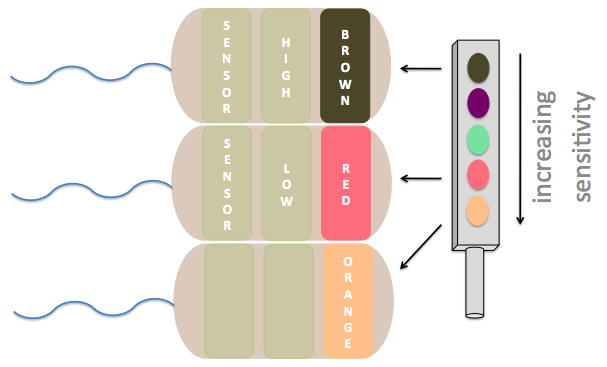Team:Cambridge/Project
From 2009.igem.org
Categories :
Project :
-
Overview
Sensitivity Tuner
--- Characterisation
--- Modelling
Colour Generators
--- Carotenoids (Orange/Red)
--- Melanin (Brown)
--- Violacein (Purple/Green)
The Future
Safety
Notebook :
Team Logistics :
Project
Abstract
The Parts Registry's repertoire of input-sensitive devices is incredibly varied. Teams have engineered E. coli to be sensitive to a wide range of environmentally significant compounds, including arsenic, mercury, lead, cyanide, BTEX chemicals, copper, etc. Commonly used outputs include fluorescence, pH, and electrical conductance. The Cambridge 2009 team explored an alternative, simpler output mechanism - the production of pigment.
Project Details
Design
Our product reports the concentration of an inducer by colour:
Each well on the palette contains a different bacterial strain, which produces pigment only when the inducer is above a specific concentration. Thus, the top well turns brown at very high inducer concentrations, while the red well is the first to be activated by the very lowest concentrations of an inducer. The orange pigment in the bottom well is constitutively expressed to show that the bacteria are alive so the product is functional.
Each bacterial strain is a machine built from a three part system:
- Sensor: Our sensor system is sensitive to different concentrations of an inducer.
- Threshold device: The threshold device is responsible for the sensitivity to the inducer, and acts as an "on" switch to activate pigment production once the inducer has reached a threshold.
- Colour: Pigment production.
Genetics
The three part system can be described by the system diagram below:
The Parts
Each of the 3 par
 "
"


